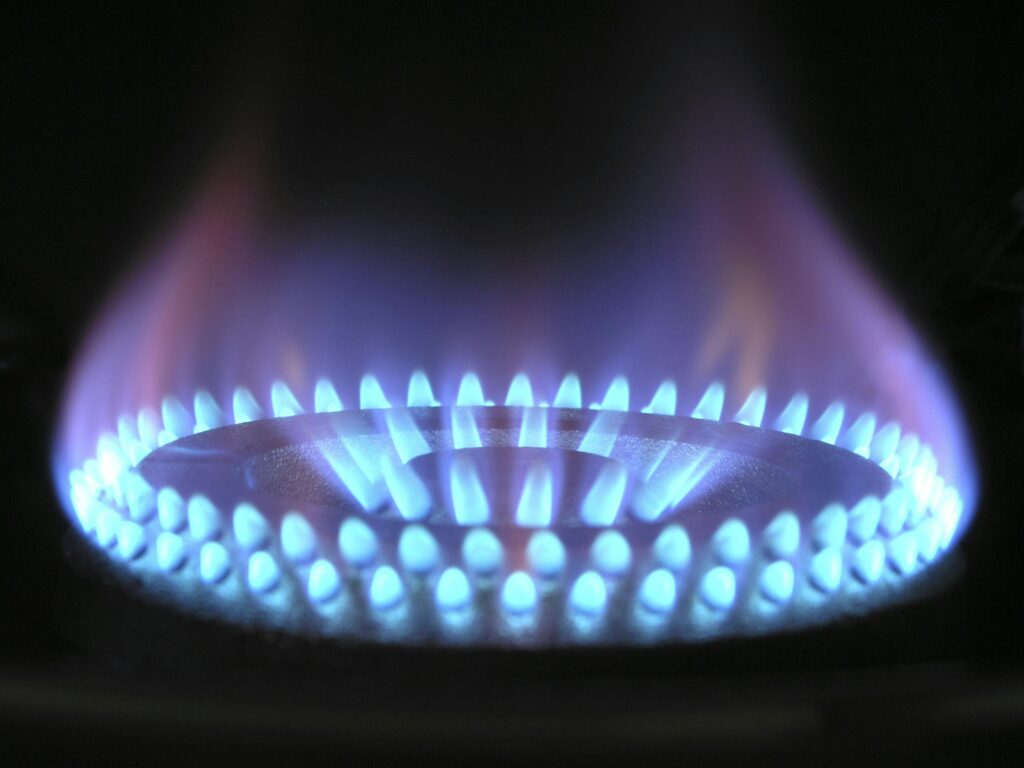Not Just Good Service but Great Service!
#1 – You are a licensed technician – not a licensed gas fitter, electrician or tradesman
#2 – Know your limitations! Both technically and legally
#3 – Have a systemic approach – checklists keep you honest
#4 – You never stop learning! Keep up to date with your own CPD
#5 – Take a Step Back- Do a “SENSE” check- ( Common Sense )
When I started my last service business, we specialised in commercial catering equipment installations, maintenance, repairs and service. I was an electrical contractor first, and then 40 years ago I progressed into an electrical/special class control and electronics and then 32 years ago added a full gas fitting licence and then eventually Type B gas qualification.
We started at job number 1 and over the 28 years logged around 120,000 jobs mostly service repairs to both electrical and gas on commercial catering equipment – from a simple cooktop through to a complex conveyor oven found in the major fast food pizza chains. We employed electricians, gas fitters, refrigeration mechanics, air-conditioning techs and fitters. Our work was diverse and covered the whole of Australia and New Zealand.
The age-old problem was finding good trades people, because we did not do one brand and we were multi trade, we had to create the multi trade service technician. This included retraining our technicians in their base trades and link to the cross trades, as well as educate them in attitude, customer service, safety and a systematic approach. A discipline in it is not always correct, until you check and cross check.
In 2007 I sold out of the service company and started Bizmatrix Pty Ltd and continued the journey as a registered training organisation. I have developed much of our learning and education based on the needs of the industry and to mould the technician to encompass working across multiple trades in not only service and installation for gas Type A and Type B, but also for service for restricted electrical licensing. To show them how to be the ‘whole’ technician that’s not just about their base trade, and to also know their limitations.
So how do we achieve this aim of being a professional technician and not just a mono-focused tradesperson?
Before we answer those questions you need to understand if the service game is right for you? If all you want to do is install gas/water pipes and equipment, dig holes, construction and power points, service is not for you…and that’s okay, be a good installer.
If you don’t back yourself and can’t control the stress of breakdown service, then the 3 negatives of service won’t assist you on your journey.
• When a customer calls, they want you there now.
• When you get there, they want you out now and the job fixed now.
• When the customer is not happy, as they believe it should not have broken down and it’s a cost they really did not bank on.
• When you are finished, then usually they do not want to pay for it. In some cases the managers would hold off the payments, so it did not affect their bonuses (great for them, terrible for cash flow).
If you do want to service…here are the five (5) ways to be a good technician, select a good technician and create a good technician.
#1 – You are a licensed technician – not a licensed gas fitter, electrician or tradesman
To be a good service person, at whatever area of service, you need to relate to all the trades and areas to fix or service an appliance. As we serviced over 9000 customers, and probably 1,000 different brands of equipment, the one trade would not cover say a gas electrical appliance, we could not afford nor could the customer afford to have a gas fitter and an electrician to fix the one job.
So we cross licensed or dual traded our team. So electricians, refrigeration, plumbers and mechanical fitters become qualified with a gas licence, and gas fitters, plumbers become qualified with a restricted electrical licence. We then educated them, through factory training, product training, in house competence training, as well as any institutional training courses that covered our requirements.
We ultimately converted our licensed trades from say electricians, to duel licensed electrical/gas but more importantly to “Technicians – Specialising in Electrical/Gas”
#2 – Know your limitations! Both technically and legally
Our service business was expected to fix everything. The issue was, we were not able to carry every single manual and every part for all equipment we fix. Often we would attend to an item that we hadn’t seen before.
Rather than saying, “I have never seen one of these before!” (a red rag to the bull), I would ask the customer, “ Could you run me through the process and show me the fault you had and when?” What I am really saying is, show me how the items works and I haven’t seen one of these before. The second method puts confidence in the customer that you are going to get it working again, and you respect them.
My rule to the technicians is to go back to the basics. After asking the customer and checking if they are operating the unit correctly, check the installation and if the power, water, ventilation and gas are correct. Also are there any reset buttons or circuits tripped? Never assume they are correct and if within 20 minutes you have not found a fault, walk away and call for help.
Use your initial checks to work through other ideas. Sometimes another point of view could help you see what you’re not seeing. I had one technician who spent 5 hours on a breakdown, and then he called me. I went out, but before I got to site I asked, “Have you checked the power in the control board for any blown fuses and gone back to basics?” He said yes, but didn’t, because when I went out, I found a blown fuse caused by water ingress into a safety switch. Fixed in 15 minutes from my arrival.
Lesson – go back to basics and systematically go through a checklist and if within 20 minutes you can’t find it holla.
#3 – Have a systemic approach – checklists keep you honest
I am not certain if it is because I am an electrician, a gas certifier in both Type A and Type B, but there are NO second chances if I make a mistake or am non-compliant. But I am a strong believer in evidence of, and doing checks on everything I do.
Because we were in service and completed over 120,000 jobs, we had to have checklists for every job, including photos, and then we would scan the results and log the information against every client’s business and in equipment order. So when the technician would attend a breakdown, the print out would include the last 5 jobs for that appliance, so the tech could see if there was any patterns and what had been checked.
This systematic approach can be used on any breakdown or service or fault finding. Service repair is like fault finding in the Brisbane river, if there was no water flowing out of the mouth of the river, you would start from the beginning, the trickle which is miles due west, and keep searching towards the mouth until you find the fault. I’ve seen technicians suggest splitting their search from the middle, hiring boats and starting from Stradbroke Island? But the facts, start from the beginning.
Is the power and gas correct?
The right amount?
Is the appliance correctly installed – correct size pipework, cables and circuit breakers?
What happened when the fault occurred?
Don’t assume it is correct and document the flow…document the results!
Check the operator is doing the right thing. I have seen in the construction area at Brisbane airport, this monster concrete mixer. The plant was blowing up a $9000 contactor every 3 days. After 3 days of fault finding and discussions and investigations from the supplier, I found the fault when I asked the operator/dispatcher to show me how he operates the spinning bowl. He said, “I jog the bowl by quickly pushing the button on/off several times.” He changed the duty cycle from 100,000 lifetime starts to 1,000,000 times, reducing the lifespan from years to hours and days. Needless to say I stopped the incorrect process, and the problem was a NON-technical operator error.
#4 – You never stop learning! Keep up to date with your own CPD
There are certain obligations with holding and maintaining a licence and qualification. If you were a doctor, pilot, engineer , nurse or a paramedic to maintain your qualification/licence there would be a monetary requirement to complete a minimum amount of Continuous Professional Development (CPD)
In all cases, they mustn’t make any mistakes. I do not think I would be comfortable flying to LA knowing an A380 Qantas pilot’s last training was when he had received his 747 pilot licence back in 1988.
As service technicians for commercial catering equipment and as service agents for many brands, we complete many hours of refresher training, technical updates and attend conferences not only in Australia, but also in the USA and Italy. In one case back in 1994, we arranged a service training trip to the USA with both myself and the other director of the company. We visited over 10 service companies that only repaired commercial catering equipment. Starting from Los Angeles we went to Las Vegas and Dallas Fort Worth, through to Wichita Kansas (Pizza Hut’s head Office at the time), New Orleans (where we attended a large food equipment trade show) through to Washington, New York, Boston and then to the Blodgett Ovens/Pitco Fryers factory in Burlington Vermont – where we spent 5 days doing intensive factory technical training /education. We continued our journey to visit more service companies in Atlanta, Chicago and then San Francisco. We even went to Italy another year to visit Factories in Milan for coffee machines and dishwasher training. We would bring the knowledge back and then convey our findings to our technicians and agents throughout Australia and New Zealand.
The training was diverse and not limited to just technical. We learnt and taught our technicians on how to express the best espresso coffee technical and the secret weapon on achieving an oven setting that could cook any pizza perfectly on any oven. Using the ‘Cook Matrix’ the three C’s, a method which determined the correct cook time and temperature to set the oven to cook correctly on any Pizza. (Which was the catalyst for naming Bizmatrix).
From day 1, I have invested in my learning and the learning of anyone in my team, I do not know everything, but I am always making a point of learning something new everyday and to take a holistic interest in everything. Plus the bonus is it is fun to learn the mysteries of how and why.
The real joy is passing on that knowledge, as when we share the knowledge, we are doing our part to getting everyone better and lifting the bar in our industry, where we all become high quality professional technicians. Who work with vigour and passion.
#5 – Take a Step Back– DO A ” SENSE” Check
1. Step Back and observe it
2. Evidence it
3. Check it
4. Document it
5. Do it
6. Log it
7. Sign it
8. Certify it
In risk assessment there is the term Take 5. Over the last few weeks I have changed the way I tackle any task or problem or area. I call the Step back! Take a step back, listen or observe first.
We have lost our two superpowers listening and seeing. Yes we were born with two ears and one mouth, but
- Many of us listen but do not hear!
- Many are looking , but can’t see
There are many factors that affect this process; emotion, preconceived ideas, jumping to conclusions and lack of facts or barriers. Since I have taken a step back, I found clarity with my decisions, less stress and more peace and harmony. The biggest change, I am able to get better solutions and usually these solutions are born by my team or the person who has requested a solution.
Years ago, a family friend was a high court barrister (not a coffee barista), no matter what questions he answered, he always delayed his answer and would listen intentionally before answering himself. I ask my father why he speaks slowly. Dad said, “It is because he is a barrister and he needs to consistently weigh up the words before he replies to articulate the correct answer as his decision and works must be precise.” And back then in 1970’s his hourly rate was $1000 per hour (actually maybe it was the charge out rate).
So take a step back. Do the job, document your findings, diarise what is happening and most importantly take pictures and then there is the final sign off. Your declaration that any work that you have completed, say electrical or gas, is that it has been electrical safety tested and or gas safety tested and operates safely as designed and complaint.
Date it. The evidence in your check sheet, is your record of findings and testing. Each test should be backed up by the Safe Operating Procedure (SOP) that is correct for the process and meets compliance. Follow a procedure that is proven and you’ll have a check sheet and evidence where you have documented the result, corrected the result and signed it off. If something goes wrong, it would be very difficult to discredit you if you have the correct qualifications and licence, if you have followed the correct procedures and have documented evidence, certification and photographic evidence.
Where do you find checklist? Gas AS/NZS5601.1 has an installation checklist and AS/NZS4575 Gas Appliance Service Type A has a service checklist. AS/NZS 3814 has risk assessments, installation, submissions and maintenance checklists for Type B gas appliances.
Bizmatrix has several non accredited and accredited courses on electrical, Type A service checklists and installation checklists and also how to compile a Type B gas submission and commissioning installation sheet. In fact if you are an electrical contractor, service contractor or a QBCC contractor it is law to have verification and certification checklists. With electrical it is estimated up to 40 points fine at $170 per point, for failing to provide a declaration after every electrical service or installation job, as well as you are required to keep the written evidence for 5 years (a further 40 point penalty if you don’t).
Want to be successful with this process, then the most important thing before you use any system is you need to understand the system and the end goal and to own it. Then Just do it ….
Remember we are all custodians and represent the success of our industry.
For more information on any courses that may assist you in you professional technician’s journey
contact Darrel Vecchio or one of our helpful Bizmatrix team members directly on 0457 595 888 or 1300 588 749 or visit www.bizmatrix.com.au




